|
|
All-Time Good-Time Knickerbocker Follies
This new musical was designed for by
Richard Finkelstein.
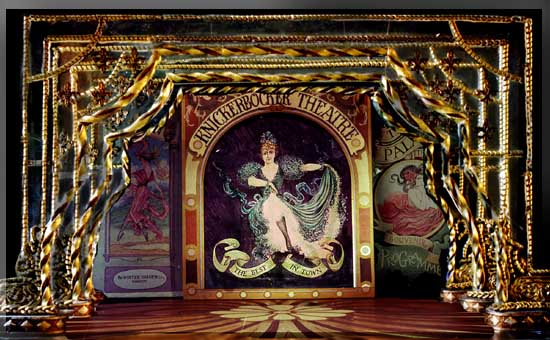
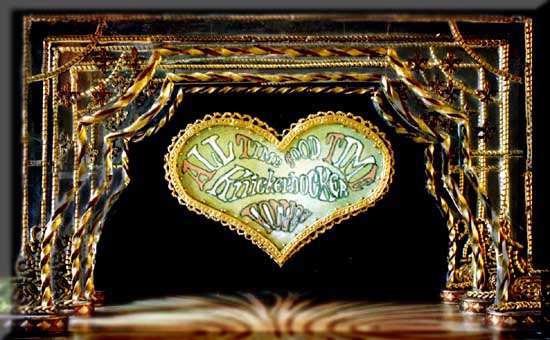
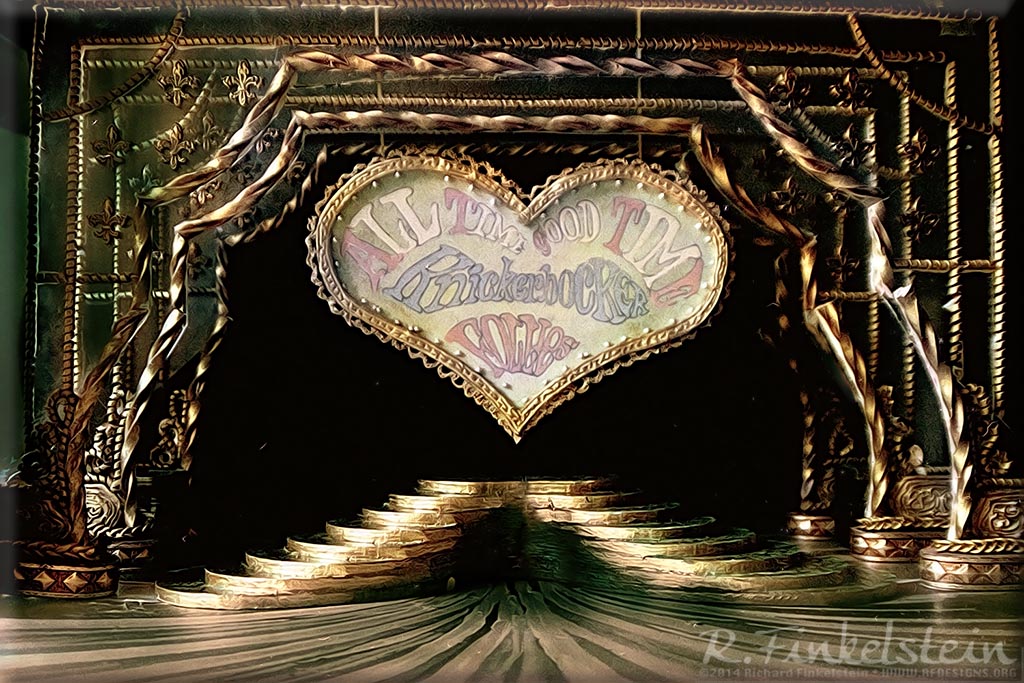
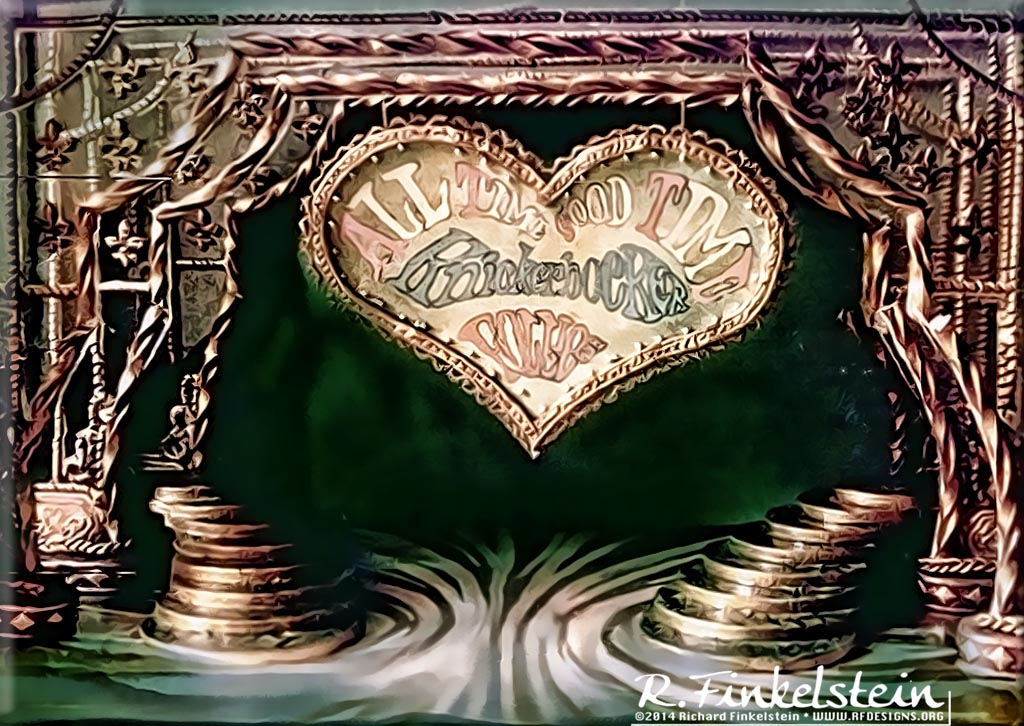
(models of the scenery)
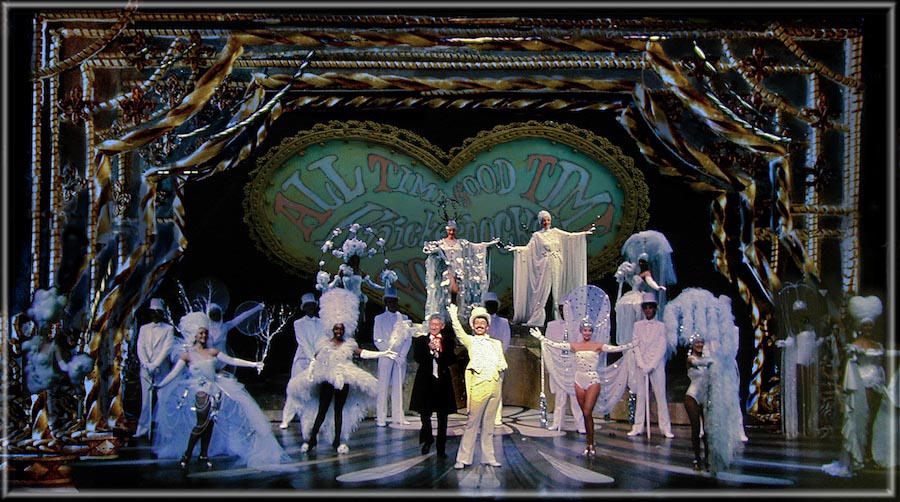
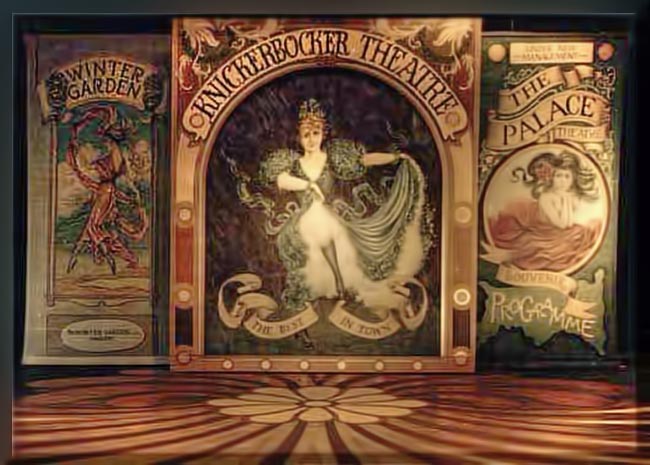
(Production Photo of Act I scrims)
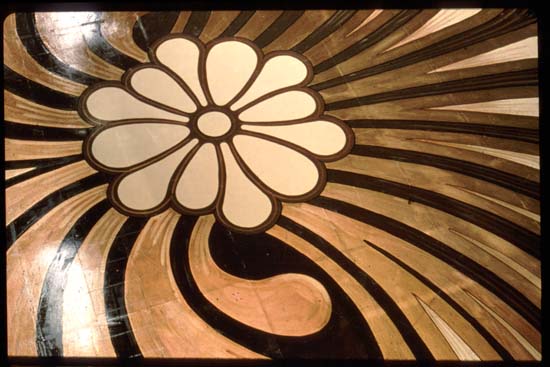
(Floor design as painted for the
production)
- Book by: Hugh Wheeler
- Lighting: Richard Nelson
- Director: Pat Birch
- Costume Designers: Patritzia Von Brandenstein, Robert Anton, Fred
Voelpel, Sally Whitmore, Karen Kammer
- Composer: Joe Raposo
- Performers: Larry Kert, Lynnie Godfrey, Jack Gilford, Sandman
Sims...
|
"The
Amazing Sandow"
from...The All-Time
Good-Time Knickerbocker Follies
by Hugh Wheeler, Ralph Allen et. al.
This
particular scene was conceived and described by Peter Foy of
Flying by Foy.
This is but one of about 17
different scenes that demonstrate the technical scope of this show that
strived to re-create the ambiance of Vaudeville and the pageantry of
early musical theatre
If the scene I am about to
describe had been presented around the turn of the century, with the
music available that is available to us today, it would be presented
thusly:
In the darkness of the theatre
our ears awaken to the plaintive soprano tones of "One Fine
Day," which we instantly recognize as the aria from Madam
Butterfly. The curtains slowly open, and that magical invention, the
limelight, picks up our lovely soloist, a vision in white chiffon,
surrounded by her court of multicolored butterflies. The music changes
imperceptibly to "Poor Butterfly"; our soloist moves
sensuously from the Tableau and we notice that her arms extend into
graceful butterfly wings. As she flutters around the stage these wings
grow longer and longer, and by the time she reaches her final pose, they
completely cover the Tableau. But, will wonders never cease -- the
tableau rises majestically above the outstretched wings, forming
spectacular swoops and synchronized somersaults, "The Aerial
Ballet" entertains us with their beauty and daring high in the loft
of the theatre. Finally they create a triumphal arch the music matches
the mood -- and through this arch enters the strongest man in the world
. . . "The Amazing Sandow." He is accompanied by two
assistants. They commence to sing that patriotic little ditty . . .
Drink your milk three times a day Love your Mom, and the U.S.A. Wave the
Flag, eat Apple Pie And you will be as strong as I.
. . . the song continues, all 17 verses of it,
whilst Sandow performs his truly unbelievable feats of strength,
finishing with what is perhaps his most under-rated presentation wherein
he balances one assistant on his index finger, the other on his big toe
-- whilst filling the theatre with his magnificent voice, as he reaches
for, and finally attains a note seldom heard outside the opera halls of
Europe. As the music swells to fill the theatre, Sandow is joined by a
bevy of bustled beauties daringly attired in white tights, high-heeled
boots, and gold-braided shocking-pink corsets. Two young ladies at each
end of the line appear to be accomplished musicians, as one with drums,
and the other with triangle, join in what has become a finale march.
However -- not to be outdone, the other young ladies turn to us in
profile, and we realize that they have xylophones cunningly affixed to
their backs. The orchestra softens to permit them a tuneful interlude
(rather like the tinkling of bells) then rejoins them for a rousing
finale that would make Sousa proud to be an American. The curtain
descends just in time to save us from being completely overwhelmed for
all of the above has only taken four minutes!
|
All-Time
Good-Time Knickerbocker Follies
(scenery design)
Context/Pretext:
I have included the designs of this
extravaganza as it is the largest project I have worked on. The
original musical production was conceived as a re-dedication of the
$100,000,000 "Egg" theatre in The Empire State Plaza in
Albany, NY. The opening was in coordination with the dedication of the
dedication at the base of the theatre, of New York State’s music
hall of fame and the production was coordinated with New York’s
Harvest of Music festival which featured 1,000 performers on 7 stages
surrounding the theatre.
So from the start, this production, funded in
part by The National Endowment for the Arts, was conceived as a true
gala production. Many of theatre’s greatest living artists were
brought together to produce this work. The team of writers, directors,
choreographers included:
-
Hugh Wheeler (who wrote the book
for many Sondheim musicals)
-
Ralph Allen (who had earlier
written the musical Sugar Babies)
-
Patricia Birch (Veteran
director/choreographer of stage, film, and television)
-
Joe Raposo (co-founder of
Sessame Street, composer for Frank Sinatra et. al.)
-
Francis and Paul Sackett (of The
New York City Ballet)
-
Peter Foy (known mostly for his
flying effects, Peter also wrote a portion of the show)
Other designers on the production
included:
-
Richard Nelson (who won the Tony
Award that year for lighting Into the Woods)
-
Patrizia von Brandenstein
(winner of the Academy Award for Amadeus)
-
Sally Whitmore (sister of James,
Sally was a fashion designer active in the 1930s)
-
Marsha Ek (veteran of Broadway
and The New York City Opera)
Performers included
-
Jack Gilford (veteran of
vaudeville, Broadway, film, and Television)
-
Larry Kert (of West Side
Story and Company fame)
-
Bob McGrath (of Sesame Street)
-
Orson Bean
-
Sandman Sims
Description:
The scenery for this production
was multi-layered and rather complex. When the audience entered the
space, they saw the theatre proscenium framed on each side with
depictions of musical theatre sheet music. These would later turn into
projection surfaces through mechanical means. The floor was painted in a
light reactive manner to resemble a giant golden flower. Otherwise, the
stage at the start of the production was bare. Backstage equipment,
lighting, etc. was fully visible. As the overture was ending, stage
hands rolled two trunks onto the stage. From these trunks a group of
performers emerged, soon joined by others.
As the opening number progressed,
a lavish music hall was "built" out of nothingness right
before the audience’ eyes. First some odd-shaped flats rolled on. The
performers moved these in formation as in a Busby Berkely number. Large
depictions of sheet music and theatre posters then flew in as backdrop
to the action. At a key moment, the rolling flat units were turned
around to reveal sinewy golden plaster architectural elements. The units
moved into formation as a triumphal arch through which the show’s star
entered (Jack Guilford the first year and Orson Bean the next).
The rolling units next parted and
moved to the side of the stage as golden sculptural elements flew in
from above. Together these flying and rolling units joined to form a
series of portals.
In such ways, every scenic element
was made to transform in one way or another. The backdrop poster panels
were all painted on scrim, the central one, to include it’s own portal
framing. Performers and other elements could be revealed through the
scrim. Each panel also included a rear-projection screen so that
projection elements could also appear through the dissolving scrim
elements. The panels themselves could all fly out to reveal the full cyc
or blackout curtain.
Many individual elements could be
introduced into this environment. A show curtain with the production’s
name within a gilt heart was used for some of the "in one"
numbers. Even this could transform. The curtain was really in three
parts. The gilt heart was a separate piece that could float on-stage
itself. The show title was painted on scrim within the heart. Performers
could be revealed within the heart through the scrim, or an additional
rear-projection screen could allow for images to be revealed through the
heart. The unit could include a muslin full-stage drop to complete the
image of a standard show curtain. The muslin had a cut-out section so
that the reveals through the heart could still be accomplished.
For act II, a set of kinetic stair
units was introduced. These could pivot into various combinations of
shapes and were augmented by theatrical chandeliers, draped fabric, etc.
The floor design was a grand
experiment in light-reactive technology. By using different
concentrations of gold powder and gloss in each section, some parts of
the design could be colored by the backlight, while other parts were
energized by the front-light.
The production was designed to
make liberal use of projection elements (not of my design) through 10
strategically placed xenon slide projectors augmented with a Pani
projector. However all projection surfaces could also be hidden so that
the period flavor of the piece was always maintained. The scenery
"hang" also had to accommodate a light plot of 400
instruments.
|
|